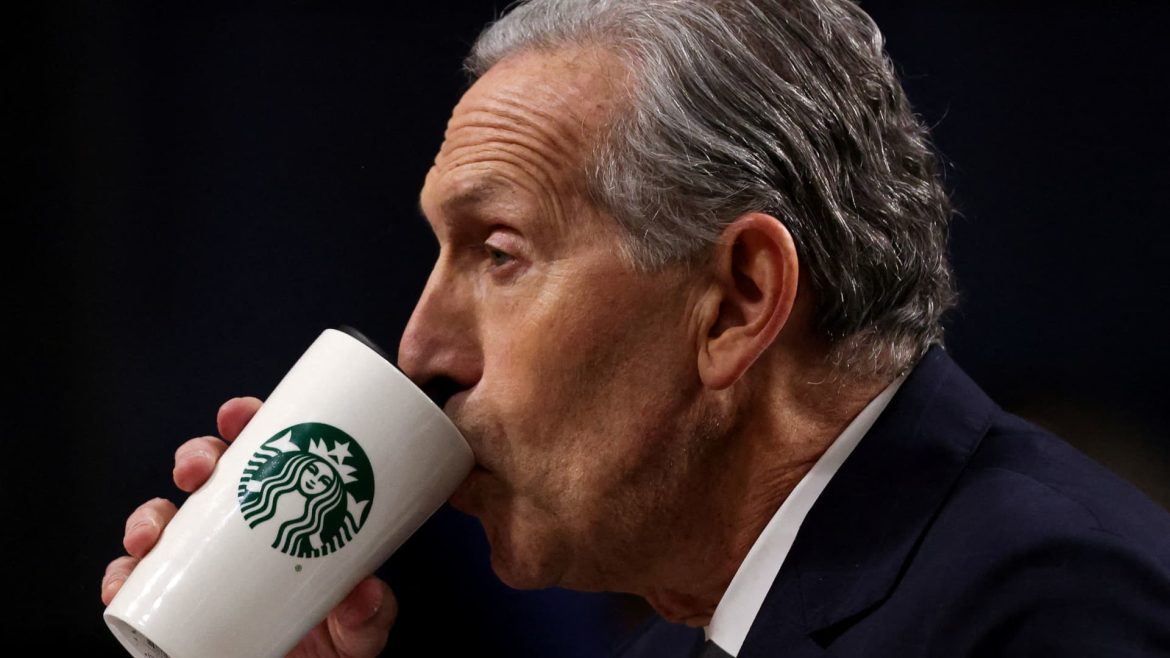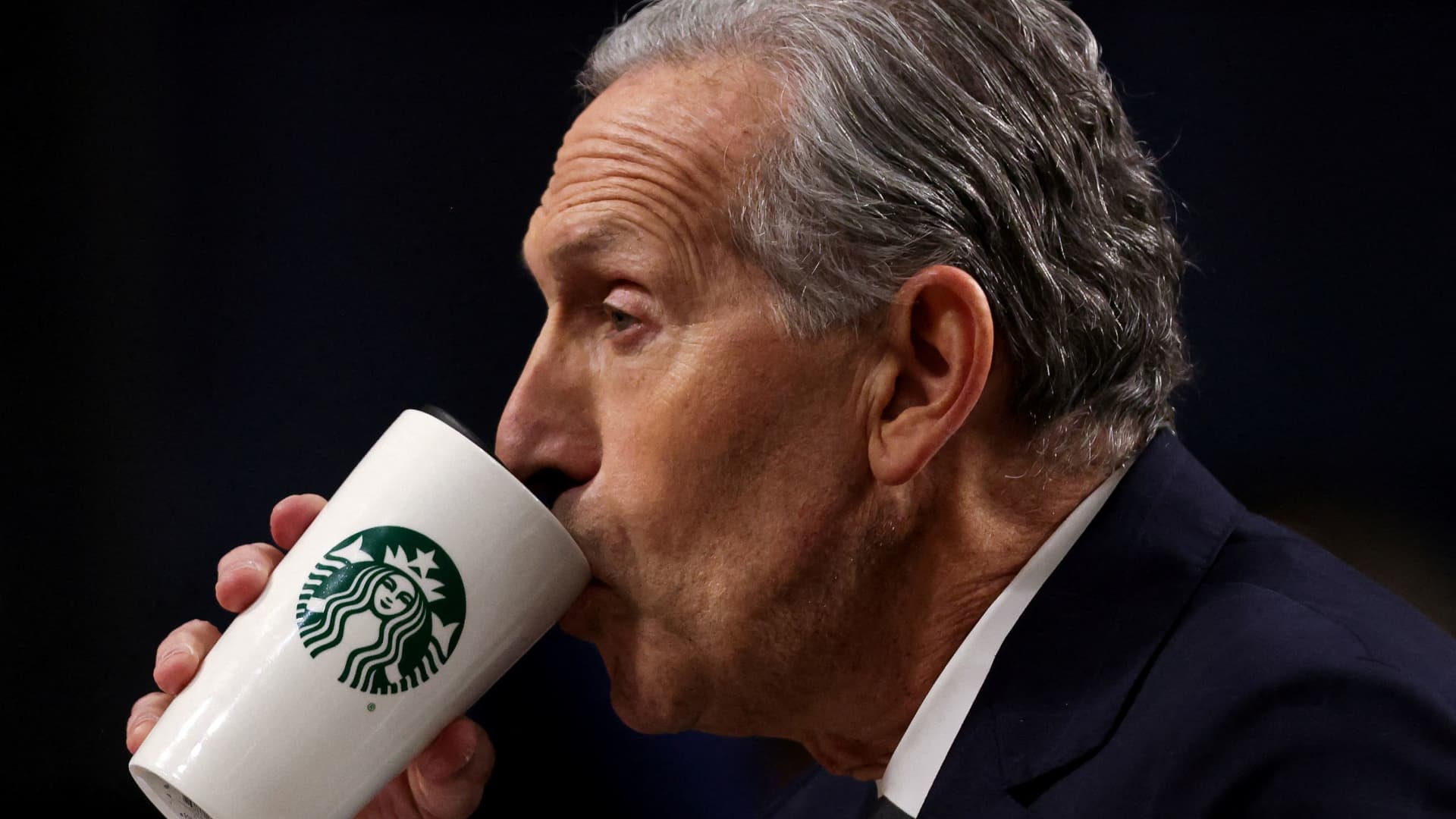Brewing Revival: How Howard Schultz Endorses Brian Niccol’s “Back to Starbucks” Strategy
Starbucks, the global coffee powerhouse, is experiencing a pivot in leadership and strategy that has caught the attention of both industry insiders and consumers alike. Former CEO Howard Schultz, the visionary who turned Starbucks into a cultural icon, has publicly expressed enthusiastic support for the new CEO Brian Niccol’s approach to reinvigorate the brand. This endorsement not only signals confidence but also encapsulates a moment of reckoning for Starbucks as it seeks to restore its core identity and recapture customer loyalty amid recent challenges.
—
The Legacy of Howard Schultz and the Need for Revival
Howard Schultz’s tenure at Starbucks was marked by transforming a local coffee shop into an international symbol of community and coffee culture. He pioneered the concept of the “third place,” positioning Starbucks as a welcoming, comfortable environment apart from home or work. Schultz also championed progressive employee benefits, such as comprehensive healthcare and stock options even for part-time workers—moves that humanized the company’s image.
Despite his successful leadership, Starbucks has faced hurdles in recent years including declining foot traffic and slowing sales, challenges exacerbated by the evolving retail climate and changing consumer expectations. Schultz himself returned intermittently to steady the ship during tumultuous times, underscoring both his commitment to the company and the gaps needing closure.
—
Brian Niccol’s Back-to-Basics Strategy: A Focus on Coffee and Customer Connection
Brian Niccol, who took the helm in September 2023, arrived with a clear mandate: stabilize the business and refocus the brand on its essence. The “Back to Starbucks” strategy coined by Niccol reflects a deliberate plan to strip away distractions and revitalise what made Starbucks great. Schultz’s reaction to this strategy has been emphatic—he famously said he “did a cartwheel” when he first heard it, a vivid indicator of Schultz’s alignment with Niccol’s vision.
Niccol’s approach centers on improving operational simplicity, enhancing product quality, and refining the customer experience to make it easier and more enjoyable to get a good cup of coffee. This “back to basics” mentality is about restoring Starbucks’ soul as a coffeehouse while adapting to modern consumer demands, particularly in convenience and value.
—
What Niccol’s Leadership Represents for Starbucks
Brian Niccol brings a fresh perspective and operational discipline from his previous role as Chipotle CEO, where he was credited with turning around a struggling brand through digital innovation, menu simplification, and a renewed focus on core values. At Starbucks, he is applying similar principles:
– Simplifying the menu and store offerings to reduce complexity.
– Leveraging technology to expedite ordering and enhance in-store experiences.
– Emphasizing human connection within stores to strengthen brand loyalty.
– Adjusting pricing strategies to make the brand more competitive without diluting the premium perception.
Niccol’s firm stance against overexpansion and distractions from core offerings signals a shift toward sustainability and quality. His recognition that customer traffic directly relates to experience and pricing is a nod to classic retail fundamentals long championed by Schultz.
—
Schultz’s Endorsement as a Symbol of Confidence and Continuity
Schultz’s vocal support is more than nostalgic approval. It’s recognition from a founder figure that the company is realigning with its foundational values. He commended Niccol’s simplicity and clarity in strategy, highlighting that a strong brand like Starbucks thrives when it remains true to its unique identity.
Moreover, Schultz’s history of reinvigorating Starbucks during crises lends weight to his belief in Niccol’s plan. Schultz’s approval crafts a narrative that this is a pivotal moment of renewal rather than just a management change.
—
Challenges and Opportunities Ahead
While Schultz and Niccol share a vision, Starbucks operates in a rapidly evolving market influenced by new consumer habits, economic pressures, and intense competition. Niccol’s “Back to Starbucks” must navigate these complexities:
– Managing pricing strategies that attract customers while maintaining margins.
– Innovating with product offerings without losing the brand’s timeless appeal.
– Ensuring employee engagement and welfare remain strong as part of the brand promise.
– Continuing to invest in digital transformation and personalized customer experiences.
If successful, Starbucks can reinforce its market leadership and reclaim growth trajectories. If not, it risks further erosion in customer loyalty and market share.
—
A Refreshed Vision for America’s Coffee Giant
The story unfolding at Starbucks is one of reinvention rooted deeply in a respect for the past and an eye toward future possibilities. Brian Niccol’s “Back to Starbucks” plan, backed earnestly by Howard Schultz, marks an inflection point. It reminds us that sometimes, pioneering brands must return to their origins to find renewed strength and relevance.
This dynamic duo—Schultz’s legacy and Niccol’s leadership—offer Starbucks a compelling path forward: a recommitment to quality coffee, meaningful customer connections, and business simplicity. The coffee world watches eagerly as Starbucks attempts to brew not just drinks, but a fresh narrative of revival and resilience.





